Classification and comparison of seven types of current sensors
Time:2022-08-05
Views:1916

1. Resistance shunt detection technology
The shunt is measured according to the voltage generated at the end of resistance 2 when the current passes through the resistance.
Application fields:
In low frequency small amplitude current measurement, it shows high accuracy and fast response speed. In the industrial field, where the electrical isolation between the measuring circuit and the measured current is not involved, the shunt is a low-cost scheme to convert the current signal into a voltage signal.
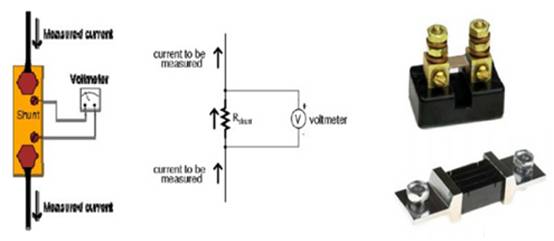
2. Current transformer
The principle of current transformer is based on the principle of electromagnetic induction. The function of current transformer is to convert the current with larger value into the secondary current with smaller value through certain changes for protection, measurement and other purposes.
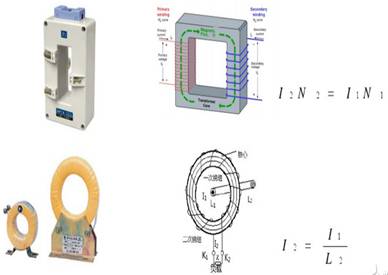
3. Hall current sensor
The open-loop Hall current sensor adopts the hall direct discharge principle, and the closed-loop Hall current sensor adopts the magnetic balance principle. Therefore, the response time and accuracy of closed-loop are much better than that of open-loop. Both open-loop and closed-loop can monitor AC. generally, open-loop is suitable for large current monitoring, and closed-loop is suitable for small current monitoring. Advantages: small package size, wide measurement range, light weight, low power loss, no insertion loss
Working process of open-loop Hall sensor:
When the primary current (IP) passes through a wire, a magnetic field will be generated around the wire. The size of this magnetic field is proportional to the current flowing through the wire. It can be induced to the hall device through the accumulation of the magnetic core and make it have a signal output. This signal is amplified by the signal amplifier and output directly. The signal output by the hall device accurately reflects the output of the primary current.

Working process of closed-loop Hall current sensor:
When the magnetic flux generated by the primary current IP is concentrated in the magnetic circuit through the magnetic core, the hall device is fixed in the air gap to detect the magnetic flux, and the reverse compensation current is output through the multi turn coil wound on the magnetic core to offset the magnetic flux generated by the primary current (IP), so that the magnetic flux in the magnetic circuit is always kept at zero. The secondary compensation current generated by Hall devices and auxiliary circuits accurately reflects the magnitude of the primary current. After special circuit processing, the output end of the sensor can output current changes that reflect the primary side current.
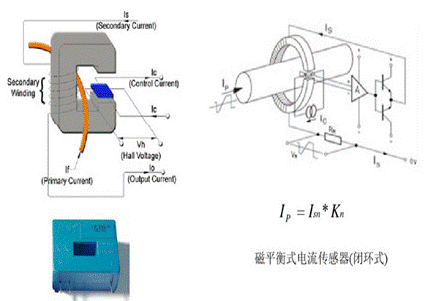
4. Fluxgate current sensor

Fluxgate sensor is a sensor that uses the nonlinear relationship between the magnetic induction intensity and the magnetic field intensity of the high conductivity magnet core in the measured magnetic field under the saturation excitation of the alternating magnetic field to measure the weak magnetic field.
Fluxgate sensor is a magnetic measuring device developed by using some soft magnetic materials with high permeability (such as permalloy) as the magnetic core and its sub saturation characteristics under the action of AC magnetic field and Faraday electromagnetic induction principle. Its structure can be regarded as a special transformer. The fluxgate magnetic measurement method uses the magnetic core of this special transformer. When the alternating current flows through the primary coil of the transformer, the magnetic core is magnetized repeatedly by the alternating supersaturated excitation. When there is an external magnetic field, the excitation becomes asymmetrical, and the output signal of the transformer is modulated by the external magnetic field. The external magnetic field can be measured by detecting the output modulation signal. The output of the fluxgate probe is mainly the second harmonic of the excitation signal, which needs to be processed to get the measurement data.
Fluxgate sensor has the characteristics of high resolution, wide measuring range of weak magnetic field, reliability, direct measurement of magnetic field components and suitable for use in fast-moving systems.
5. Roche coil
Rogowski coil, also known as magnetic level meter, is a kind of hollow coil wound on a non-magnetic skeleton, which measures large current based on the principle of electromagnetic induction. It has the advantages of wide measurement range, high precision, good insulation performance and no magnetic saturation phenomenon. But it can only be used to detect AC current.
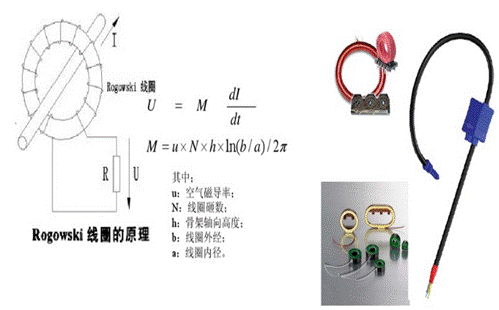
6. Giant magnetoresistive current sensor
The giant magnetoresistance sensor consists of four giant MAGNETORESISTANCES to form a Wheatstone bridge structure, which can reduce the impact of the external environment on the output stability of the sensor and increase the sensitivity of the sensor.
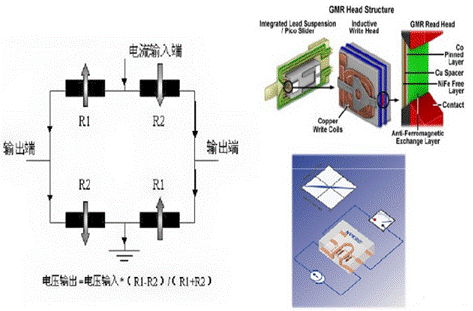
7. Optical fiber current sensor

The laser beam passes through the optical fiber, generates polarized light through the polarizer, and is emitted to the magneto-optical crystal through the self focusing lens: under the action of the external magnetic field generated by the current, the polarization plane rotates θ F angle; Through the polarizer and optical fiber, enter the signal detection system, and θ The current value is obtained from the measurement of F.
When the included angle of the light transmission principal axes of the two polarizers in the system is set to 45 °, the output light intensity after passing through the sensing system is:
l=(Io/2)(1+sin2 θ F)
Where IO is the incident light intensity. Through the measurement of the emitted light intensity, it can be concluded that θ F. Thus, the current can be measured.
advantage:
(1) It is easy to install, without disconnecting the conductor, and only winding the slender and soft insulating optical fiber on the conductor can detect the current, which can realize the small benefit and light weight of the whole sensing device;
(2) No electromagnetic noise interference. In recent years, in the measurement and control system, the output of the sensor is generally connected to the electronic circuit of the semiconductor, and the sensor device itself is all composed of optical devices, so it has the characteristics of anti electromagnetic interference (EMI);
(3) The measurement range is wide, without the restriction of core magnetic saturation. At the same time, the response speed of Faraday effect is fast, and it has a wide measurement range from low frequency to high frequency and to high current;
(4) Because the signal is transmitted through optical fiber. Small waveform distortion. The transmission loss is small, so long-distance signal transmission can be realized.
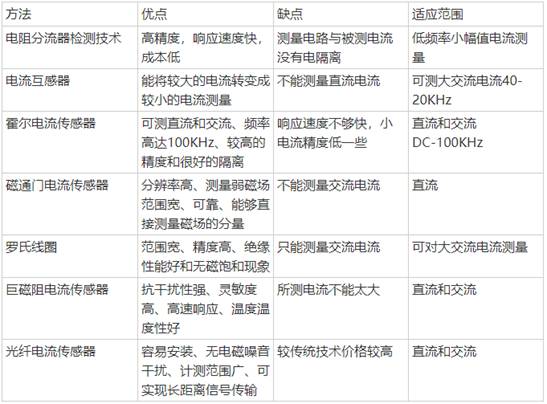
|
Disclaimer: This article is transferred from other platforms and does not represent the views and positions of this site. If there is infringement or objection, please contact us to del |











